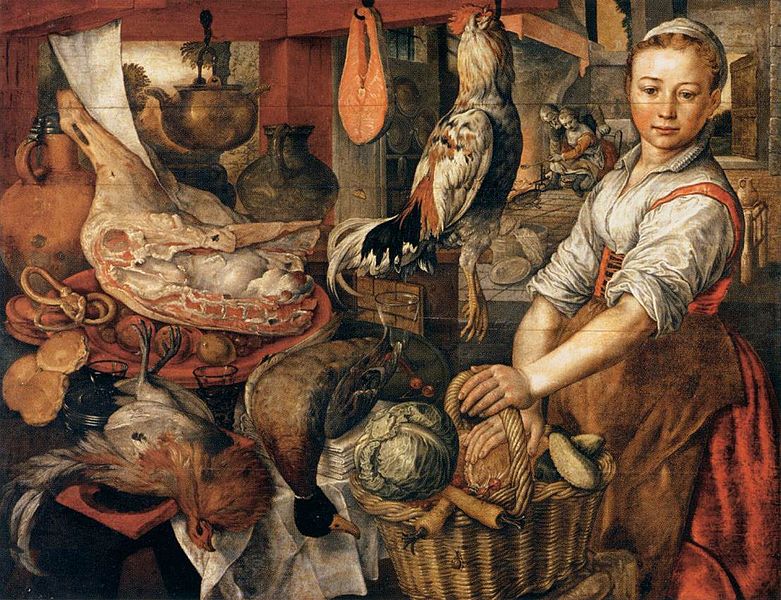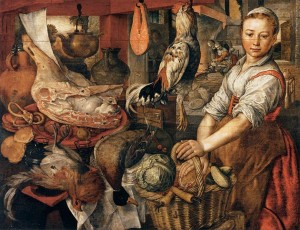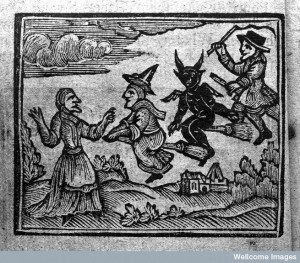

Wikimedia Commons
It was common knowledge in early modern England that sexual desire was malleable, and could be increased or decreased by a range of foods – including artichokes, oysters and parsnips. This book argues that these aphrodisiacs were used not simply for sexual pleasure, but, more importantly, to enhance fertility and reproductive success; and that at that time sexual desire and pleasure were felt to be far more intimately connected to conception and fertility than is the case today. It draws on a range of sources to show how, from the sixteenth to the eighteenth centuries, aphrodisiacs were recommended for the treatment of infertility, and how men and women utilised them to regulate their fertility. Via themes such as gender, witchcraft and domestic medical practice, it shows that aphrodisiacs were more than just sexual curiosities – they were medicines which operated in a number of different ways unfamiliar now, and their use illuminates popular understandings of sex and reproduction in this period.
You can find out more about these titillating substances and their use at this time in Aphrodisiacs, Fertility and Medicine in early modern England
NOW AVAILABLE FOR £35 just enter offer code BB401 at the checkout when purchasing online
(a paper order form can also be accessed here Discount Flyer and Order Form)
We can see these ideas clearly from just two observations recorded in medical treatises. These cases also show that both men and women suffered and were treated similarly. In Nicholas Culpeper’s edition of Lazarus Riverius’ medical book we find a rather sad woman who asks for a prescription of aphrodisiacs to help her have children. Riverius described her as suffering from a ‘Listlessness to Carnal Conjunction’ and wrote about her,
‘A Woman very desirous of Children, but having no appetite to Carnal Embracements, entreated me that I would kindle in her the desires of the flesh, which were (as she said) Mortified to her.’ To do so he recommended a complex remedy – that contain several well-known aphrodisiacs including Eringo root, Satyrion (you can find out more about the titillating properties of satyrion here)

Take Conserve of Eringos Root and of the Male Satyrion, of each one ounce. Orenge Rinds preserved in Honey six drams. One preserved Wal-nut. Confectio Alkermes, an half ounce. Amber Greese, flying Pismires, of each one scruple; Mosch, six grains. With Syrup of preserved Citrons, male al into an Electuary. Of which let her take before a light Supper the Quantity of a smal Chest-Nut, drinking a little Hippocras after it. There is nothing in the world more effectual in these cases, than to anoin the Region of the Womb, with Oly of flying Pismires, which is made after this manner.
Take of Flying Pismires, two ounces; infuse them in Oyle fourty daies together in the hot Sun of the Dog-daies.’1
Both men and women used aphrodisiacs in the early modern period. A Dutch doctor – Isbrand Van Diemerbroeck – explained that he had treated a man when the remedies he had taken for a wound in the thigh left him with a flagging libido. The aphrodisiac of choice this time was again Satyrion, but taken with hot meats and spices:
“The Country-man complained to me of another Malady no less ungrateful to his Wife, that his Inclinations to conjugal performance were utterly extinguish’d, and his Venereal Ability quite lost, which Malady he said had befallen him but since the Cure of his Thigh. Presently I suspected that this Languidness proceeded from the use of the Camphire, which I had mixed with the Balsam and other Plaisters; so that I forbore the farther use of it, and gave the Country-man Electuary of Dysatyrion to take, and prescrib’d him a Nourishing Dyet of Hot Meats, with Spices, Leeks and Onions, which restored him to that Degree that he followed his Wives Agriculture as he was wont to do”.2
1. Lazarus Riverius, Nicholas Culpeper, Abdiah Cole, The Practice of Physick, In Two Volums, Very Much Enlarged … (London 1658), 259.
2. Isbrand van Diemerbroeck, The anatomy of human bodies, 79 (irregular pagination).
© Copyright Jennifer Evans, all rights reserved. This post can also be found on my personal blog jennifercevans.wordpress.com



One thought on “Aphrodisiacs, Fertility and Medicine”
Comments are closed.